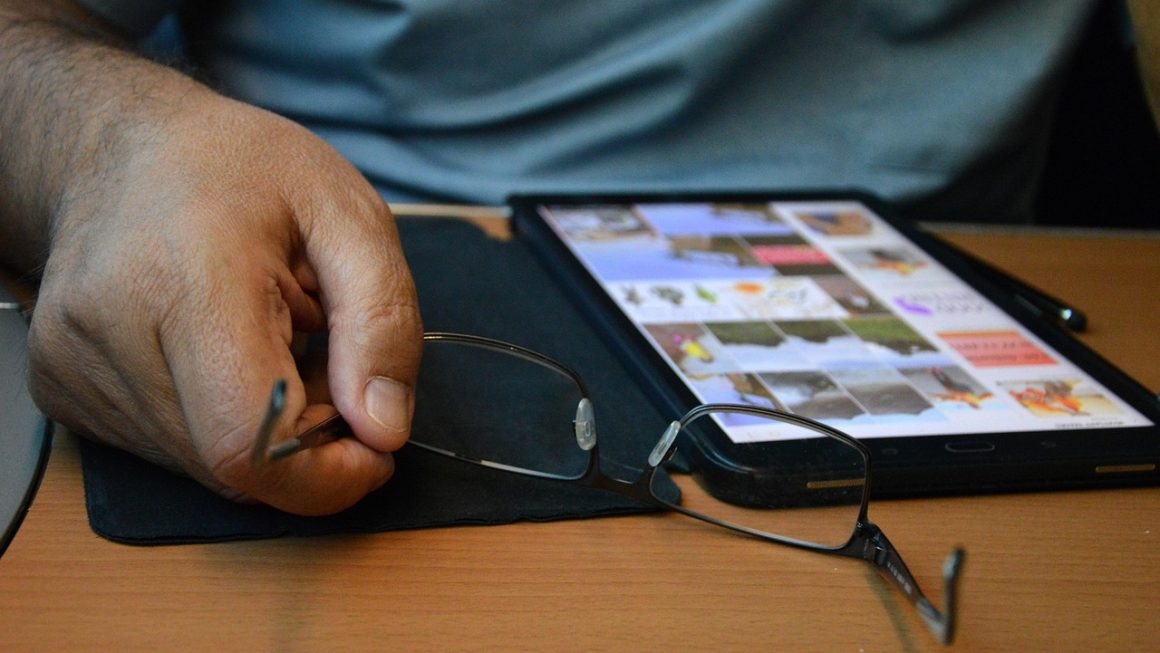Are you constantly battling a never-ending to-do list, feeling overwhelmed and unproductive? In today’s fast-paced digital world, mastering digital productivity is not just desirable, it’s essential. This blog post will provide you with the strategies, tools, and techniques to reclaim your time, boost your efficiency, and achieve your goals in the digital realm. We’ll delve into practical tips and actionable advice to help you become a digital productivity master.
Understanding Digital Productivity
What is Digital Productivity?
Digital productivity is about leveraging technology and digital tools to maximize your output and efficiency. It’s about working smarter, not harder, and utilizing the digital landscape to streamline your workflows, automate tasks, and ultimately achieve your objectives more effectively. It’s not just about using more apps; it’s about using the right apps and systems in the right way.
Why is Digital Productivity Important?
In a world saturated with information and distractions, digital productivity is crucial for:
- Increased Efficiency: Completing tasks faster and with fewer errors.
- Improved Time Management: Prioritizing tasks and allocating time effectively.
- Reduced Stress: Minimizing overwhelm and feeling more in control.
- Better Work-Life Balance: Freeing up time for personal pursuits and relaxation.
- Enhanced Focus: Concentrating on important tasks without distractions.
According to a recent study by McKinsey, improving digital productivity can boost organizational performance by up to 25%. This highlights the significant impact it can have both on an individual and organizational level.
Essential Tools for Digital Productivity
Task Management Software
Task management software helps you organize, prioritize, and track your tasks.
- Examples: Asana, Trello, Todoist, Microsoft To Do
- Benefits:
Centralized task management
Collaborative features for team projects
Progress tracking and reporting
Due date reminders and notifications
- Practical Tip: Choose a task manager that aligns with your workflow and team’s needs. For individual use, Todoist’s simplicity can be powerful. For team collaboration, Asana or Trello offer more robust features.
Note-Taking Apps
Note-taking apps allow you to capture ideas, organize information, and access your notes from anywhere.
- Examples: Evernote, OneNote, Notion, Google Keep
- Benefits:
Centralized storage for notes and ideas
Searchable content for quick retrieval
Cross-platform accessibility
Collaboration features (in some apps)
- Practical Tip: Use tags and folders to organize your notes effectively. Experiment with different note-taking methods, like the Cornell method or mind mapping, to find what works best for you. I personally use Notion for its versatility and ability to combine note-taking with project management.
Communication and Collaboration Platforms
These platforms facilitate seamless communication and collaboration within teams.
- Examples: Slack, Microsoft Teams, Google Workspace
- Benefits:
Real-time communication
File sharing and collaboration
Video conferencing
Project-specific channels for focused discussions
- Practical Tip: Establish clear communication guidelines within your team to avoid information overload and ensure efficient communication. For example, designate specific channels for different projects or topics. Avoid unnecessary @everyone mentions.
Time Tracking Software
Time tracking software helps you monitor how you spend your time, identify time-wasting activities, and optimize your schedule.
- Examples: Toggl Track, Clockify, RescueTime
- Benefits:
Accurate time tracking for projects and tasks
Detailed reports on time allocation
Identification of time-wasting activities
Improved time management and prioritization
- Practical Tip: Use time tracking for a week to get a baseline understanding of your time usage. Then, identify areas where you can cut back on non-productive activities.
Proven Strategies for Boosting Digital Productivity
Mastering Email Management
Email can be a major time sink. Implement these strategies to regain control:
- Batch Processing: Allocate specific times each day to process emails instead of checking them constantly.
- The Two-Minute Rule: If an email can be addressed in under two minutes, do it immediately.
- Unsubscribe Ruthlessly: Unsubscribe from unnecessary newsletters and promotional emails.
- Use Filters and Rules: Automatically filter emails into folders based on sender, subject, or keywords.
- Templates and Snippets: Create templates for frequently used email responses.
- Example: Set aside 30 minutes in the morning and 30 minutes in the afternoon to process your emails.
Optimizing Your Workspace
A clutter-free and organized workspace can significantly improve focus and productivity.
- Digital Decluttering: Organize your files, folders, and desktop. Delete unnecessary files and applications.
- Ergonomics: Ensure your workspace is ergonomically sound to prevent physical discomfort and fatigue.
- Minimize Distractions: Use website blockers and noise-canceling headphones to minimize distractions.
- Physical Organization: Keep your physical workspace tidy and organized.
- Example: I use the “Freedom” app to block distracting websites and social media during focused work sessions.
Implementing the Pomodoro Technique
The Pomodoro Technique is a time management method that involves working in focused 25-minute intervals, separated by short breaks.
- How it works:
1. Choose a task to focus on.
2. Set a timer for 25 minutes (one “pomodoro”).
3. Work on the task until the timer rings.
4. Take a 5-minute break.
5. After four pomodoros, take a longer break (20-30 minutes).
- Benefits:
Improved focus and concentration
Reduced burnout
Enhanced time management
- Practical Tip: Use a Pomodoro timer app or website to track your intervals. Experiment with different break lengths to find what works best for you.
Prioritizing Tasks Effectively
Effective prioritization is key to maximizing productivity.
- The Eisenhower Matrix (Urgent/Important): Categorize tasks based on urgency and importance, then prioritize accordingly.
Urgent & Important: Do these tasks immediately.
Important but Not Urgent: Schedule these tasks.
Urgent but Not Important: Delegate these tasks.
* Neither Urgent nor Important: Eliminate these tasks.
- Eat the Frog: Tackle the most challenging task first thing in the morning.
- Pareto Principle (80/20 Rule): Focus on the 20% of tasks that yield 80% of the results.
- Example: If you have a deadline approaching (urgent & important), prioritize it over checking social media (neither urgent nor important).
Overcoming Common Digital Productivity Challenges
Combating Digital Distractions
Digital distractions are a major obstacle to productivity.
- Identify Your Distractions: Determine which websites, apps, or activities are most distracting to you.
- Use Website Blockers: Block distracting websites and social media during focused work sessions.
- Turn Off Notifications: Disable unnecessary notifications from apps and devices.
- Create a Dedicated Workspace: Establish a distraction-free workspace where you can focus on your work.
- Mindfulness Techniques: Practice mindfulness techniques to improve focus and concentration.
- Example: I turn off all notifications on my phone and computer while working on important projects.
Dealing with Information Overload
Information overload can lead to stress and reduced productivity.
- Filter Information: Be selective about the information you consume. Focus on relevant and important sources.
- Summarize and Synthesize: Summarize key information and synthesize it into actionable insights.
- Create a Knowledge Base: Organize important information in a central location for easy access.
- Delegate Research: Delegate research tasks to others when possible.
- Learn to Say No: Don’t be afraid to say no to requests that will overload you with information.
- Example: I use a feed reader to subscribe to only the most relevant blogs and news sources in my field.
Avoiding Multitasking
Despite its appeal, multitasking is often less productive than focusing on one task at a time.
- Focus on One Task at a Time: Concentrate on completing one task before moving on to the next.
- Use Time Blocking: Allocate specific blocks of time for specific tasks.
- Minimize Interruptions: Reduce interruptions by closing unnecessary applications and silencing notifications.
- Practice Mindfulness: Practice mindfulness to improve focus and concentration.
- Example: I schedule dedicated blocks of time for writing, coding, and meetings to avoid multitasking.
Conclusion
Mastering digital productivity is a continuous journey, not a destination. By understanding the principles, implementing the strategies, and utilizing the tools discussed in this blog post, you can significantly enhance your efficiency, reduce stress, and achieve your goals in the digital world. Remember to experiment with different techniques to find what works best for you, and continually refine your approach to optimize your productivity over time. Embrace the power of digital tools to transform your work habits and unlock your full potential.




